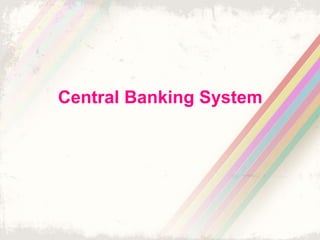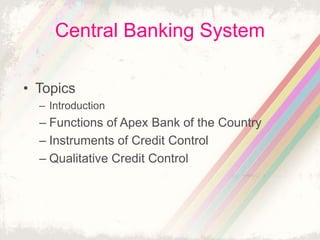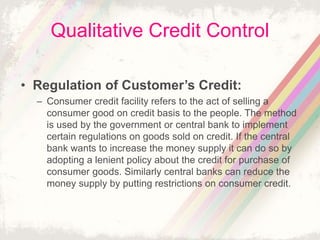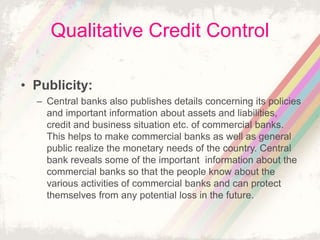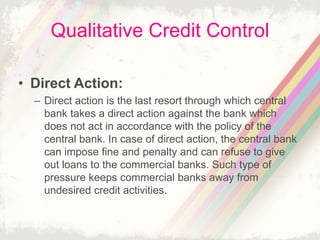The central banking system establishes a central bank that manages monetary policy by controlling the supply of money and credit. The Reserve Bank of India is the central bank of India, established in 1935. It manages monetary policy through instruments of quantitative and qualitative credit control. Quantitative controls include bank rate, open market operations, reserve requirements, and credit ceilings. Qualitative controls include changing margin requirements, regulating consumer credit, moral suasion, publishing information, and direct actions.
